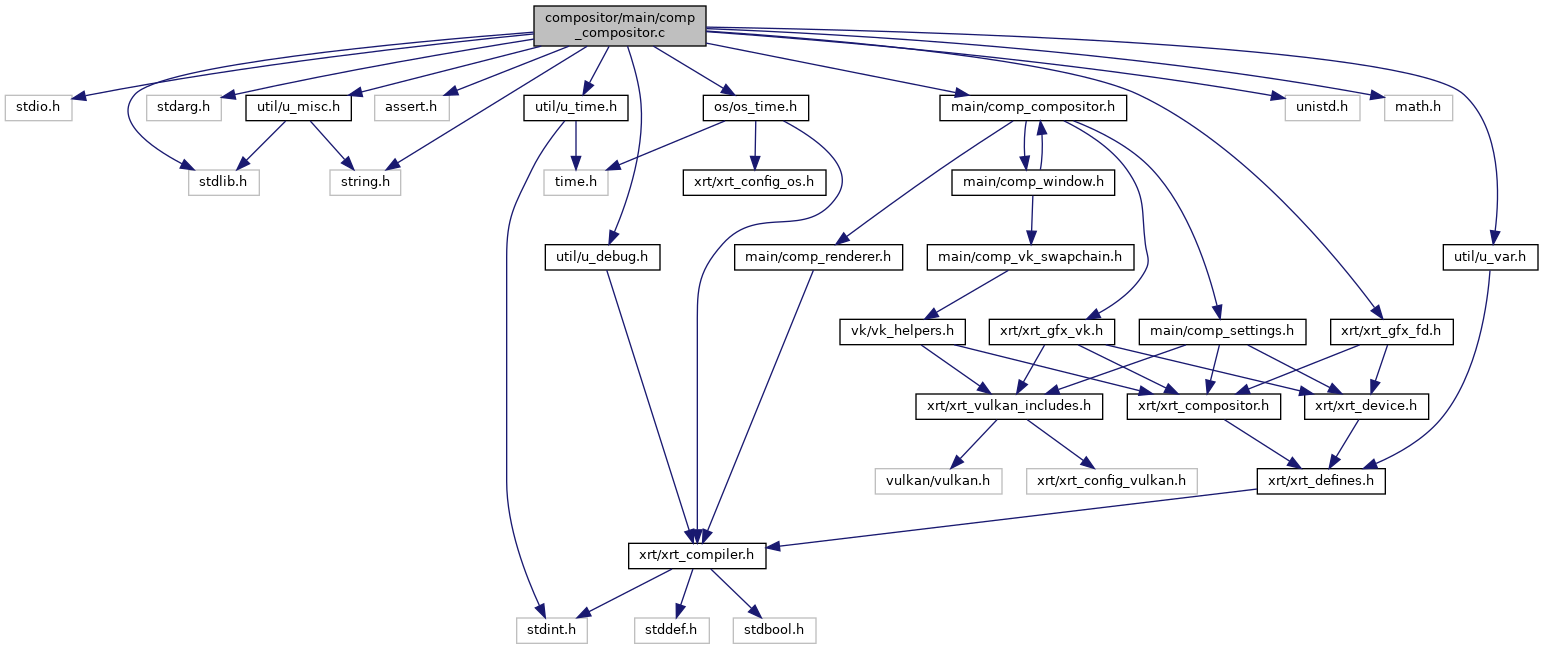Main compositor written using Vulkan implementation. More...
#include <stdio.h>#include <stdlib.h>#include <stdarg.h>#include <string.h>#include <assert.h>#include "os/os_time.h"#include "util/u_debug.h"#include "util/u_misc.h"#include "util/u_time.h"#include "main/comp_compositor.h"#include "xrt/xrt_gfx_fd.h"#include <unistd.h>#include <math.h>#include "util/u_var.h"
Functions | |
| VKAPI_ATTR PFN_vkVoidFunction VKAPI_CALL | vkGetInstanceProcAddr (VkInstance instance, const char *pName) |
| void | comp_compositor_print (struct comp_compositor *c, const char *func, const char *fmt,...) |
| struct xrt_compositor_fd * | xrt_gfx_provider_create_fd (struct xrt_device *xdev, bool flip_y) |
| Creates the main fd compositor. More... | |
Detailed Description
Main compositor written using Vulkan implementation.
begin_frame and end_frame delimit the application's work on graphics for a single frame. end_frame updates our estimate of the current estimated app graphics duration, as well as the "swap interval" for scheduling the application.
We have some known overhead work required to composite a frame: eventually this may be measured as well. Overhead plus the estimated app render duration is compared to the frame duration: if it's longer, then we go to a "swap interval" of 2.
wait_frame must be the one to produce the next predicted display time, because we cannot distinguish two sequential wait_frame calls (an app skipping a frame) from an OS scheduling blip causing the second wait_frame to happen before the first begin_frame actually gets executed. It cannot use the last display time in this computation for this reason. (Except perhaps to align the period at a sub-frame level? e.g. should be a multiple of the frame duration after the last displayed time).
wait_frame should not actually produce the predicted display time until it's done waiting: it should wake up once a frame and see what the current swap interval suggests: this handles the case where end_frame changes the swap interval from 2 to 1 during a wait_frame call. (That is, we should wait until whichever is closer of the next vsync or the time we currently predict we should release the app.)
Sleeping can be a bit hairy: in general right now we'll use a combination of operating system sleeps and busy-waits (for fine-grained waiting). Some platforms provide vsync-related sync primitives that may get us closer to our desired time. This is also convenient for the "wait until next frame" behavior.
Macro Definition Documentation
◆ COMPOSITOR_COMMON_VULKAN_EXTENSIONS
| #define COMPOSITOR_COMMON_VULKAN_EXTENSIONS |
 1.8.13
1.8.13